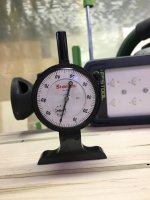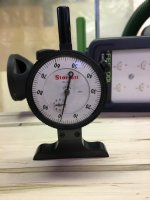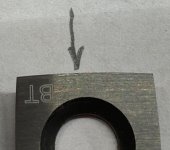DynaGlide
Member
- Joined
- May 16, 2017
- Messages
- 1,697
First time planer user, new DW735 w/ Shelix head.
I'm reading about scalloping after the fact, because mine is doing that to the boards I plane. On a 7" wide board I get about 3-4 slight lines down the length. If I run the machine on the faster feed setting I can just catch them with my fingernail. I know [member=44099]Cheese[/member] mic'ed these in an old thread and found them to be on the order of a few thousandths.
The material is hard maple, and I want to set some expectations. It takes about 4 passes with the ETS EC 125 and 120 grit to get rid of them. I'm guessing I can attribute that to the hardness of the wood. When I'm done, my straight edges don't show any gaps. But if I turn the lights out, and put a flashlight behind the straightedge, I can see the light.
Hopefully someone will come along and tell me I have unrealistic expectations out of the machines.
Thanks,
Matt
I'm reading about scalloping after the fact, because mine is doing that to the boards I plane. On a 7" wide board I get about 3-4 slight lines down the length. If I run the machine on the faster feed setting I can just catch them with my fingernail. I know [member=44099]Cheese[/member] mic'ed these in an old thread and found them to be on the order of a few thousandths.
The material is hard maple, and I want to set some expectations. It takes about 4 passes with the ETS EC 125 and 120 grit to get rid of them. I'm guessing I can attribute that to the hardness of the wood. When I'm done, my straight edges don't show any gaps. But if I turn the lights out, and put a flashlight behind the straightedge, I can see the light.
Hopefully someone will come along and tell me I have unrealistic expectations out of the machines.
Thanks,
Matt





